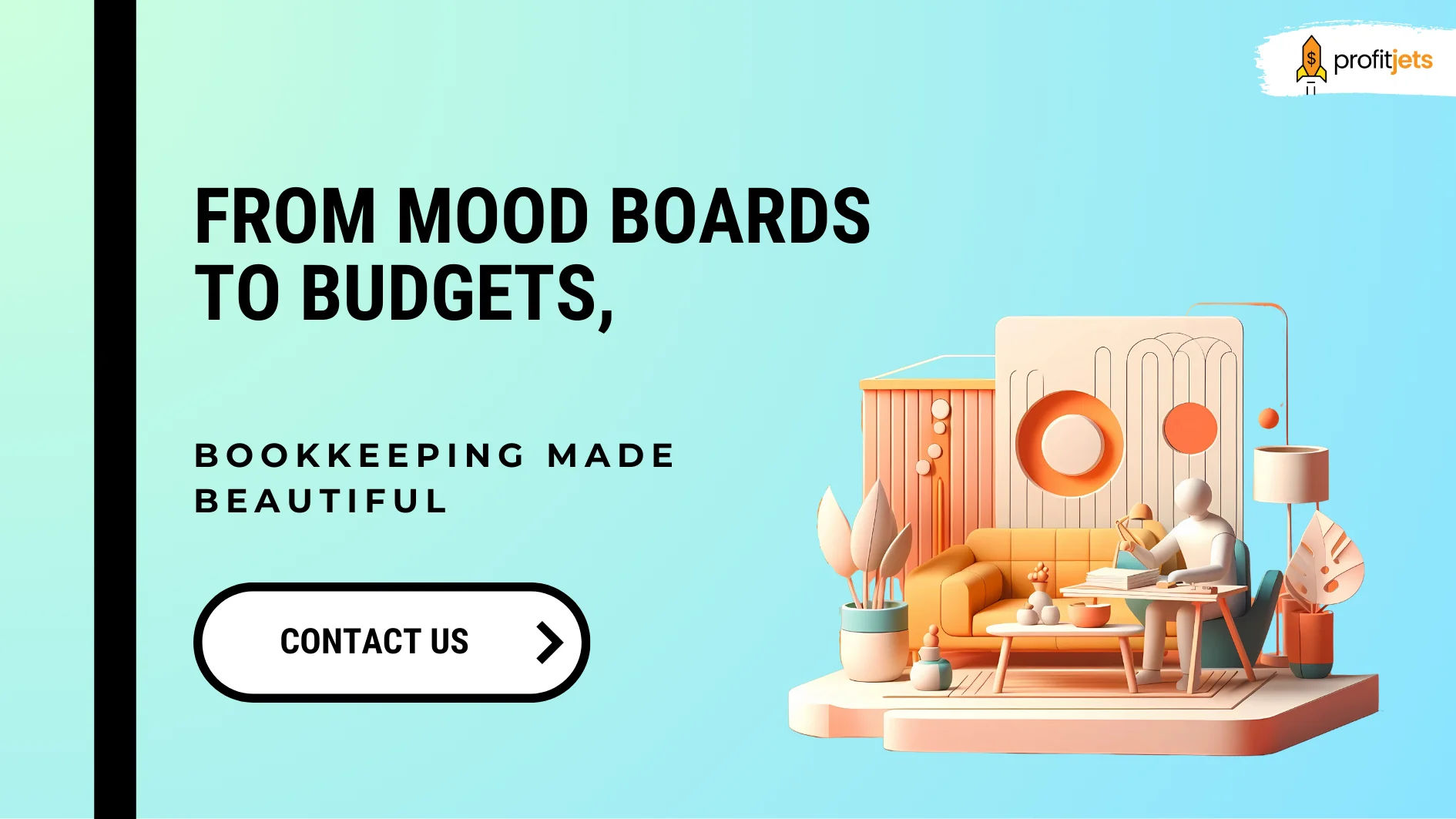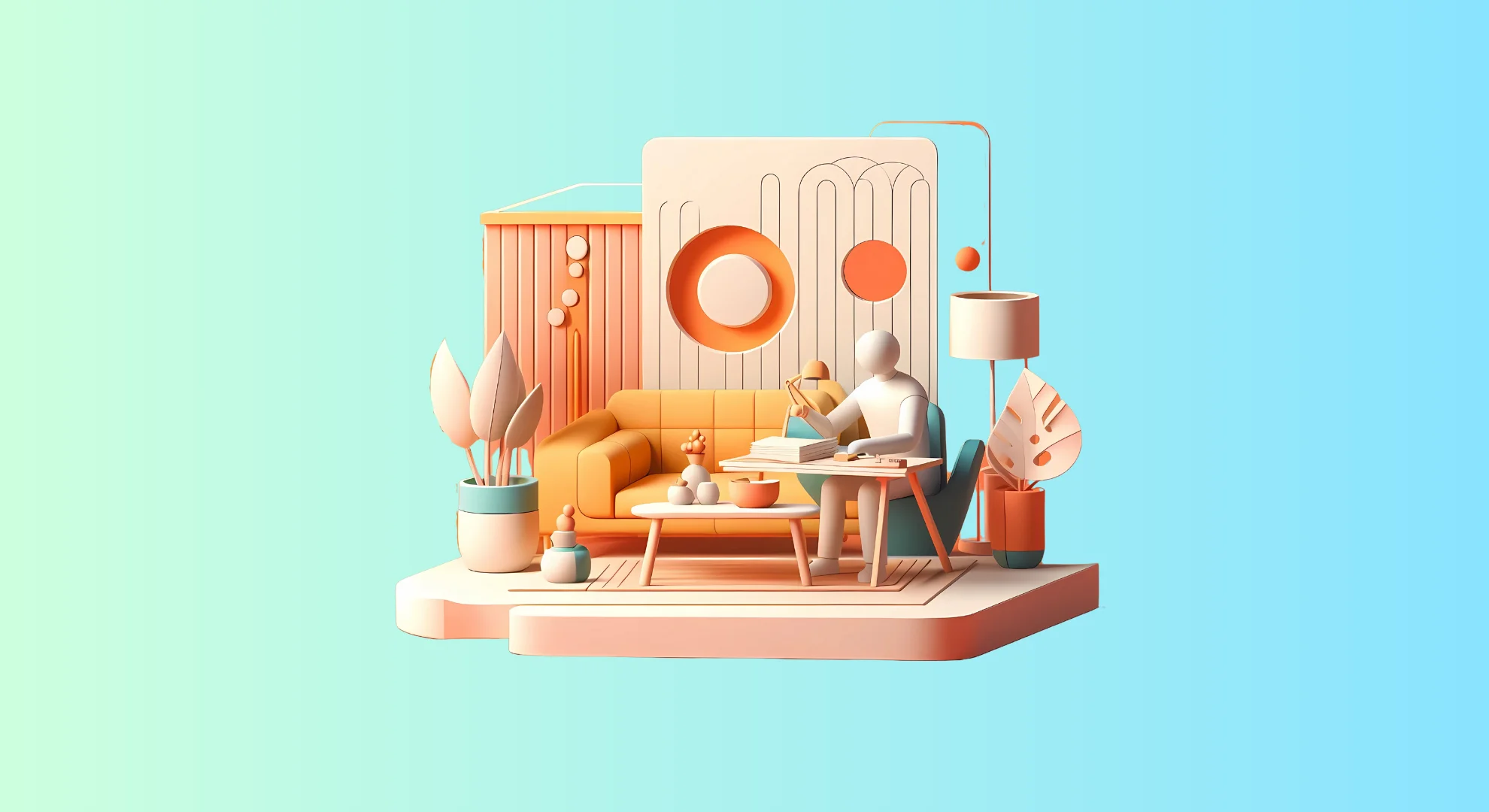Turning inspirations into stunning spaces is your magic, but juggling invoices and tracking expenses might feel like a different beast. Fear not, design-savvy entrepreneur! This detailed guide empowers you to master the art of bookkeeping for interior designers, laying the foundation for financial clarity and growth.
Table of Contents
What is Bookkeeping for Interior Designers?
Beyond crunching numbers, bookkeeping for interior designers involves meticulously recording, organizing, and analyzing your financial transactions. It paints a vibrant picture of your business health, encompassing income (client payments, product sales), expenses (materials, software, marketing), and liabilities (loans, taxes). With clear financial insights, you can make informed decisions, optimize pricing, and ensure your design dreams have a solid financial foundation.
Importance of Bookkeeping for Interior Designers:
Accurate bookkeeping goes beyond aesthetics. It offers a multitude of benefits for your design business:
- Informed Decision Making: Precise financial data empowers you to confidently price projects, manage project budgets, and invest in strategic areas for growth.
- Tax Preparation Bliss: Organized records make tax season a breeze. Minimize stress and potential penalties with accurate expense deductions and seamless filing.
- Cash Flow Management Mastery: Track your income and expenses to avoid cash crunches and make timely payments to vendors and yourself.
- Peace of Mind: Knowing your finances are in order allows you to focus on what you do best – creating stunning designs.
- Business Valuation Advantage: Well-maintained financial records enhance your business’s value, attracting investors and facilitating growth opportunities.
Bookkeeping Tips for Interior Designers:
Start your financial journey with these practical tips:
- Embrace Technology: Invest in user-friendly bookkeeping software, like QuickBooks Online or Xero, designed for small businesses. Automate tasks, categorize transactions and generate reports with ease.
- Categorize Like a Pro: Create a consistent system for categorizing income (e.g., client fees, furniture sales) and expenses (e.g., materials, travel, software subscriptions). This simplifies analysis and identifies areas for cost optimization.
- Receipt Rodeo: Tame the paper trail! Collect and store receipts (physical or digital) for all purchases. These are crucial for expense documentation and tax deductions.
- Project-Based Tracking: Track income and expenses for each project to analyze profitability, identify cost-saving opportunities, and refine your pricing strategy.
- Regular Reconciliation: Reconcile your bank statements with your bookkeeping records to ensure accuracy and identify discrepancies early on.
Best Bookkeeping Software for Interior Designers:
Choosing the right bookkeeping software empowers your financial flow. Popular options include:
- QuickBooks Online: User-friendly and affordable, offering basic accounting features and mobile app access.
- Xero: Cloud-based and collaborative, catering to growing businesses with advanced inventory management and project tracking tools.
- FreshBooks: Simple and intuitive, ideal for freelancers and solopreneurs with basic invoicing and expense tracking needs.
- Wave Accounting: It is free to use with basic features, suitable for starting businesses with limited transactions.

Bookkeeping and Taxes for Interior Designers:
Tax season doesn’t have to be a design nightmare. Remember:
- Stay Updated: Keep abreast of changing tax regulations and deductions specific to interior designers. Consult a tax professional for personalized guidance.
- Classify Income and Expenses: Differentiate business and personal expenses to ensure accurate tax filing and avoid potential audits.
- Track Mileage: Deduct qualified business mileage using a tracking app or logbook.
- Depreciate Assets: Understand depreciation schedules for furniture, equipment, and software to spread their cost over their useful life and reduce taxable income.
- Seek Professional Help: Consult a certified bookkeeper or tax professional for complex tax matters and filing assistance.
Common Bookkeeping Mistakes for Interior Designers:
Avoid these mistakes for financial harmony:
- Mixing Personal and Business Finances: Ensure separate bank accounts and credit cards for precise financial tracking and compliance.
- Ignoring Petty Cash: Track and account for all petty cash transactions to avoid discrepancies and potential fraud.
- Neglecting Invoicing: Issue invoices promptly and follow up on outstanding payments to ensure timely cash flow.
- Skipping Regular Reviews: Be sure to review your books before tax season. Conduct regular financial reviews to identify potential issues and optimize performance.
- Procrastinating on Reconciliation: Address discrepancies and reconcile your accounts regularly to maintain accurate financial records.
Tracking Your Money: Bookkeeping for Interior Designers:
Mastering these financial elements is critical:
- Income: Track client fees, product sales, design consultations, and other revenue streams.
- Expenses: Categorize expenses accurately, including materials, software subscriptions, marketing, travel, and overhead costs.
- Inventory: Track inventory of furniture, fabrics, and other design elements to avoid overstocking, optimize purchasing decisions, and minimize waste.
- Payroll: If you have employees, accurately track payroll expenses, including salaries, taxes, and benefits.
Essential Bookkeeping Skills for Interior Designers:
Sharpen your financial toolkit with these skills:
- Basic Accounting Principles: Understand core accounting concepts like debit and credit, income and expense, and balance sheets. Online resources and courses can help build your knowledge.
- Attention to Detail: Meticulous record-keeping is crucial for accuracy and avoiding costly errors.
- Organization: Develop a system for efficiently storing receipts, invoices, and other financial documents.
- Time Management: Dedicate regular time for bookkeeping tasks to avoid last-minute scrambling.
- Technology Savvy: Learn to navigate your chosen bookkeeping software and leverage its features effectively.
Budget Like a Pro: Bookkeeping for Interior Projects
Successful projects start with sound financial planning:
- Create a Detailed Project Budget: Outline expected income from client fees, product sales, and other sources — factor in all anticipated expenses for materials, labor, subcontractors, and other costs.
- Track Project Expenses: Monitor project expenses meticulously, comparing them to your budget and identifying deviations early on.
- Adjust as Needed: Be flexible and adapt your budget based on project developments or unforeseen circumstances.
- Communicate Clearly: Discuss budget expectations and potential adjustments transparently with your client to maintain trust and avoid disputes.
How Profitjets Helps Interior Designers in Bookkeeping Services:
Let Profitjets handle the financial heavy lifting while you focus on your design magic:
- Experienced Bookkeepers: Our team of certified bookkeepers understands the unique needs of interior designers, ensuring accurate and efficient financial management.
- Tax Preparation and Filing: We handle all your tax compliance needs, maximizing deductions and minimizing liabilities.
- Cloud-based Platform: Access your financial data and reports anytime, anywhere, with our secure cloud-based platform.
- Project-Specific Tracking: We provide detailed project-level financial insights to optimize profitability and inform pricing strategies.
- Scalable Solutions: With your business’s growth, our services grow too, adapting to your evolving needs and expanding your design empire.
By embracing the art of bookkeeping, you empower your design dreams with a solid financial foundation. Remember, clear financial insights unlock informed decisions, strategic growth, and the peace of mind to focus on what you do best – creating spaces that inspire and delight.











